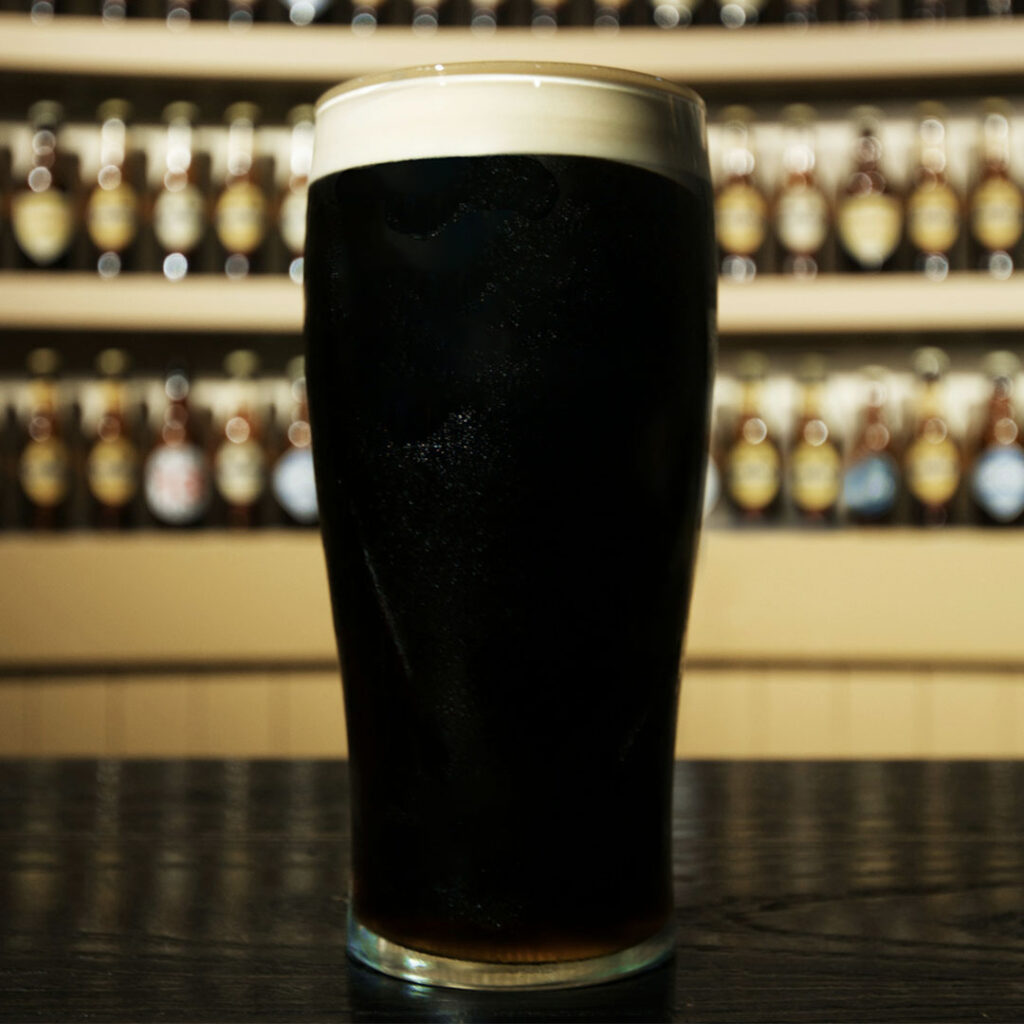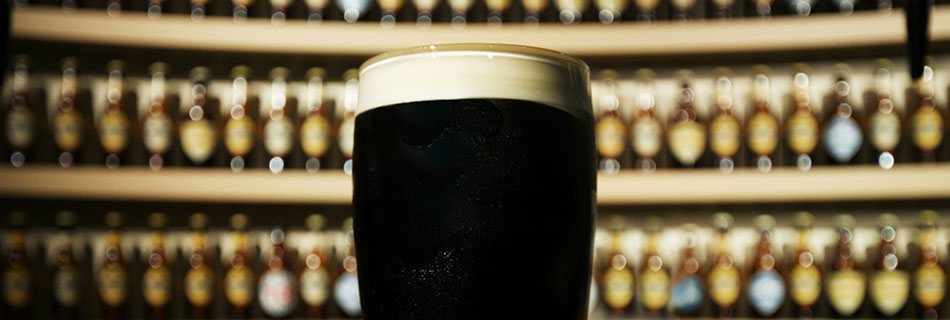Before we talk about our Irish Stout recipe, let’s dive into history. The term Stout first appeared in the late 1600s as a term for stronger beers. These beers stood out for their full body, rich mouthfeel, and often higher ABV. At that time, brewers made a clear distinction between Stout Ales and Stout Porters. By the 18th century, the term had evolved. It now referred specifically to the stronger version of Porters, becoming synonymous with bold, full-bodied beers.
Thanks to technological advancements, such as the invention of black malt, brewers started experimenting with new flavour profiles. By the late 1800s, Stout had firmly established itself as a distinctive style. Its darker malts and stronger hops set it apart from all other beers.
What defines a Stout?
Stouts are known for their roasty, bold flavours, often including hints of coffee or chocolate. Some versions balance these intense flavours with a malty sweetness. For instance, the Dublin-type Stout uses a significant amount of roasted barley, which gives it a characteristic flavour. However, other stouts use chocolate and specialty malts to create a smoother, slightly sweeter version.
Additionally, draught Stouts have become extremely popular, especially when poured with nitrogen. This method creates a creamy, long-lasting foam, and a silky smooth mouthfeel, enhancing the overall drinking experience.

| Original gravity | 1036 – 1044 |
| Final gravity | 1007 – 1011 |
| Colour EBC | 49 – 79 |
| Colour Lovibond | 19 – 30 |
| IBU | 25 – 45 |
| ABV % | 4.0 – 4.5 |
Grain bill
| Variety | Quantity | Quantity | Colour EBC | Colour ºL | Ratio |
|---|---|---|---|---|---|
| Swaen Ale | 3 kg | 6.6 lb | 8 | 3.6 | 67% |
| Barley Flakes | 1 kg | 2.2 lb | 3 | 1.7 | 22% |
| Black Swaen Barley | 0.5 kg | 1.1 lb | 1100 | 415 | 11% |
Start your Stout recipe with a solid base of pale malt. Then, add a high proportion of roasted barley to achieve the deep, roasted flavours Stouts are known for. For a creamy texture and dry finish, include at least 20% barley flakes. Keep the mash temperature at 67°C (153°F) or below to avoid any unwanted sweetness and maintain the dry mouthfeel.
Hops
| Variety | Quantity | Quantity | Duration | Alpha acid | IBU |
|---|---|---|---|---|---|
| East Kent Goldings | 50 g | 1.8 oz | 60 min. | 4.5% | 32 |
For Stouts, bitterness is key. Therefore, hops should be added only at the beginning of the boil. This ensures they contribute to the beer’s bitterness without overwhelming its flavour. Aroma hops are not typically used in this style.
Yeast
To finish off ;p[-0our Irish Stout recipe, choose high-attenuation yeast strains. These yeast strains will help achieve the dry finish you’re after. Ferment at 19-21°C (66-70°F) for 7-10 days to ensure thorough fermentation. This gives you a dry, yet balanced beer that will stand out in your lineup.
Dry examples: Gozdawa British Ale Withbread or Lallemand Nottingham.
Liquid examples: WhiteLabs WLP007 Dry English Ale or Wyeast Irish Ale 1084.
Results
| Batch size | 19 L / 5 gallon |
| Efficiency | 70% |
| Original gravity | 1041 |
| Final gravity | 1009 |
| Colour EBC | 69 |
| Colour Lovibond | 26 |
| IBU | 32 |
| ABV % | 4.2 |
| Carbonation | 1.6 |
| pH | 5.2 |
Appearance
Deep brown to black colour, with creamy foam.
Taste profile
Creamy maltiness with hints of coffee. This beer is easy to drink.
Food pairing
Beef or lamb stew, steak pie, oysters.


